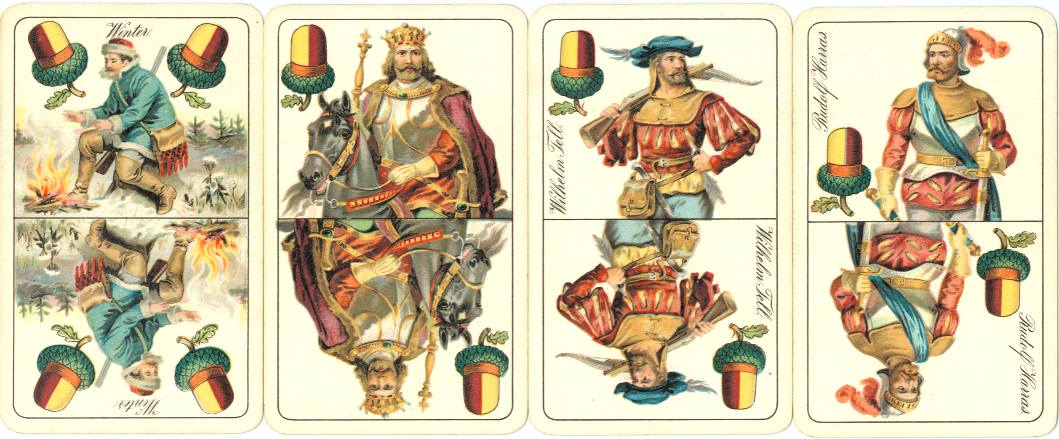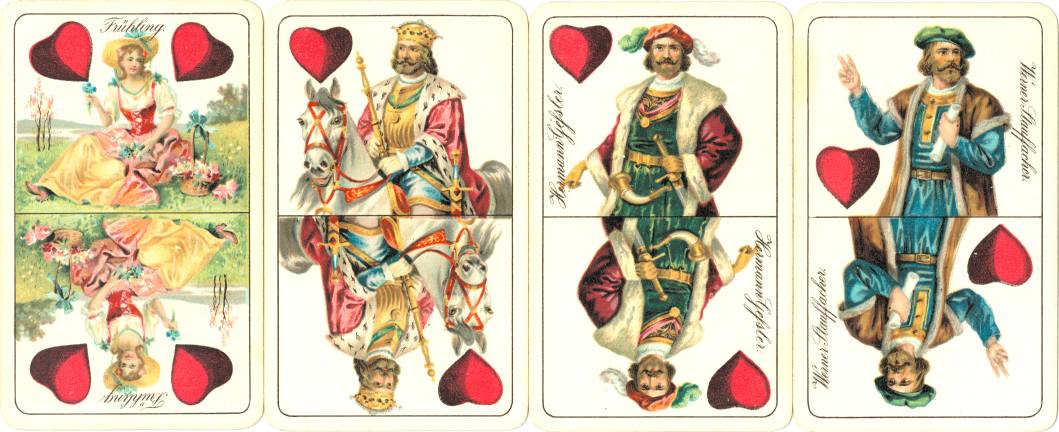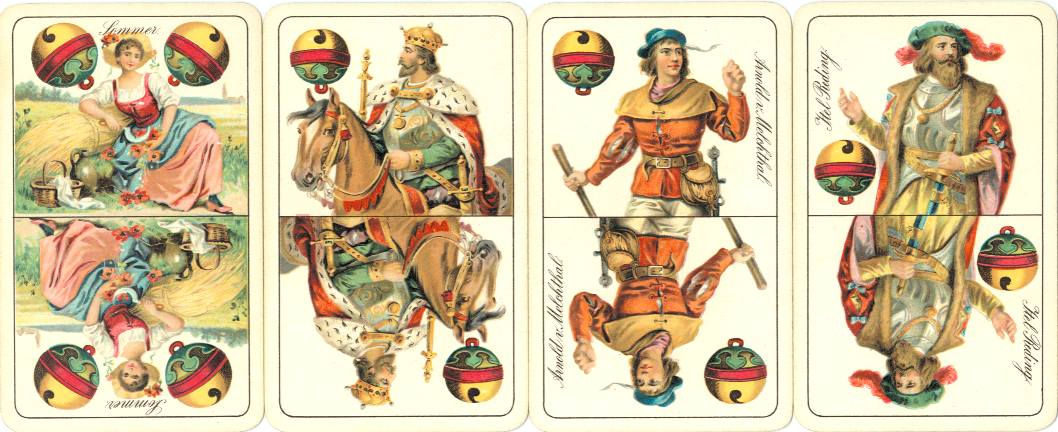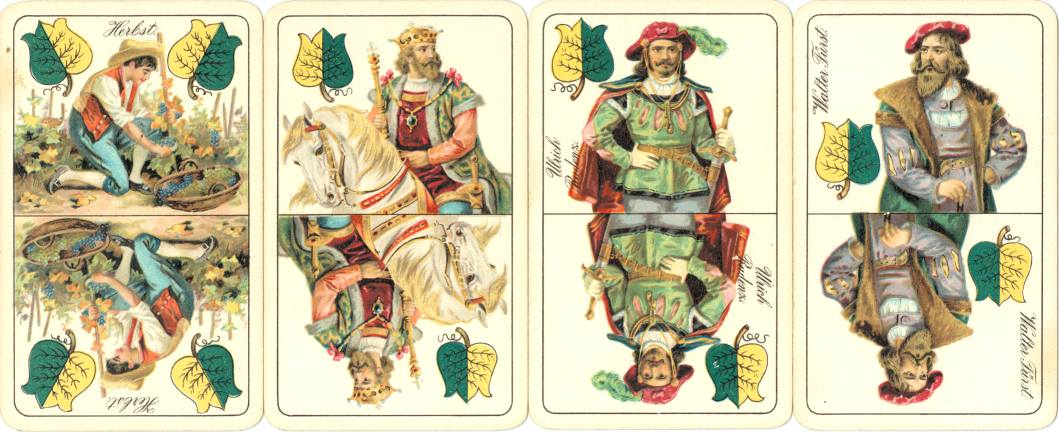
A TALE TO TELL
-2-
We believe that a pattern may be called a standard pattern, when it's not only produced by the manufacturer who first designed and produced this pattern, but when other local or regional playing card manufacturers copy and produce that same design of the courts. In many cases a standard pattern will cross borders too. And that also goes for this Hungarian pattern. It became a popular pattern in Czechia, Austria and the southern part of Germany too, so after a while it was also produced there. Nowadays even Carta Mundi has a version of this pattern in its vast offer. It's funny, but in Switzerland -with joined borders with Austria and Germany- this pattern isn't used, while William Tell is -although fictional- an accepted Swiss figure.
Here below we'll show a luxury version, which was made by Piatnik around 1900. It was printed in chromolithography and with an eye for fine detail and colour. The text is in German and here the first name comes before the family name.

Wilhelm Tell is the Ober in the Acorn suit and his name needs no further explanation. There are many other characters in the play from 1804 by Johann Christoph Friedrich Schiller, not all with an evenly important role in the saga. We'll give a short explanation with the names that we found on the cards in the different decks. Here Rudolf Harras is on the Unter of Acorns. He was the master of the horse of Hermann Gefsler (or Geszler), who was the governor of Schwytz and Uri, two cantons under Austrian domination. His name is on the Ober of Hearts. The Unter of Hearts in this deck shows the name of Werner Stauffacher, a citizen of Schwytz.


The Ober in the Bells suit here is Arnold von Melchthal, a citizen of Unterwald and on the Unter is Itel Reding, a citizen of Schwytz. Ulrich Rudenz on the Ober of Leaves was the nephew of Hermann Gefsler and Walter Fürst on the Unter of Leaves was a citizen of Uri.
